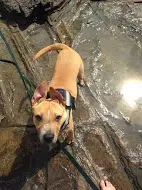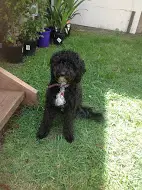
Browse Categories
- Dog Boot Camps
- Test
- Test
- Dogs Please Clicker Training
- Pet Insurance Comparison
- Exercising Pets With An E Scooter
- 10 Reasons Why Guinea Pigs Are Wholesome Little Pets
- Why You Should Use a Shed to House Your Pet
- How can Dog Owners Keep their Carpets Clean?
- How to Keep Your House in Order With Large Pets
- What is the Best Way to Feed a Puppy to Keep Them Healthy
- Pets Please
- All Animals and Pets
- Dogs and Puppies
- Cats and Kittens
- Birds
- Fish
- Reptiles
- All Other Small Pets
- Claws 'N' Paws Events
- PetsInLimbo/Greys4PetsInc.
News Search
PetsPlease News and Advice
Dogs Please Clicker Training WEEK 8
Week Eight
Being Consistent

Consistency is something that I learned relatively late in my dog training career. Yet it is vitally important and my life would have been a lot easier had I learned it sooner.
Being consistent without fail in dog training is another step to success. Consistency is simply good communication between you and your dog.
A Quick Assessment
1. Think of a person that you know who changes their approach towards you on a regular basis. It could be your boss at work, a friend or a family member. This person expects one thing from you but then changes it to another. How do you feel? Do you really have any idea what this person wants from you?
2. Now think of another person, one that you can rely on to be consistent with their expectations of you. Maybe a parent or a spouse? Someone that never changes ‘the goalposts’ and that you know will always act the same way towards you. How do you feel when interacting with this person?
I suspect that the first person leaves you confused and maybe even a little bit stressed. Yet the second is someone that you feel secure enough to approach when you need help?
Now I would like you to put yourself in the position of your dog and look at the assessment above again, would you say that your dog thinks your own expectations are closer to 1 or 2? For instance do you sometimes give up or overlook occasions when your dog does not do as he is asked?
Be Consistent with your Dog
Consistency when associated with dog behavior is very simple. When you ask something of your dog you make sure that he does what you ask until you give permission for him to stop.
Despite being the simplest thing it also has to be fair on the dog by adhering to the following rules;
1. You only ask your dog to do something that he knows how to do.
2. You only test your dog within his own current capabilities
3. Your dog is always set up to succeed with your help, remember confidence is conductive to learning whilst anxiety is not.
The Importance of a Well Timed Release
The release command is an integral part of consistency. Whether you are teaching your dog something brand new, or carrying out a long practice of something he already knows, it is important to release your dog before he changes position himself. If he does change position then you held him too long before giving the release, you have expected too much from him at that point, remember good dog training always sets the dog up to succeed.
When you ask something of a dog that is definitely within his capabilities make sure he responds, then expect him to wait for release, you are being consistent. The dog that knows exactly where he stands because he is guided by a fair and kind owner is far happier than a dog that has to guess what you want from him and whether you mean what you say this time.
As you establish consistency in communication with your dog then you will see a quick and huge improvement in your training and his behavior. It is amazing that something as simple as flawless communication in this way, makes such a difference.
A Working Example
Let’s teach your dog something exciting this week and use consistency to its full potential. We will teach him to stay in a down position whilst you move out of sight. Remember what we already know about teaching anything new and keep your distractions down at the beginning;
1. Teach your dog to lie down if you haven’t already. Remember to use the steps we have learned to teach anything new.
2. Strengthen the position by rewarding it and establishing a release command. If you release after one successful second this is far better than waiting too long and creating a confused dog that breaks the command on his own. Building on a successful few seconds is far easier than undoing a bad habit.
3. Remember to set the dog up to succeed by only asking him to wait for release for as long as he can. When you get your release in quickly every time you will make far quicker progress than a dog that jumps up before he gets permission.
4. Increase the time and distance between command and release gradually by walking around your dog, jumping up and down and walking away and back before reward and release.
5. When your dog is in a strong down position go out of his sight for a few seconds then return to him and reward him.
6. Practice increasing time and distance in the same way.
Have fun, enjoy your dog and let us know how it goes, remember to note your experience down too. See you next week.

Wednsday 13th May 2015
